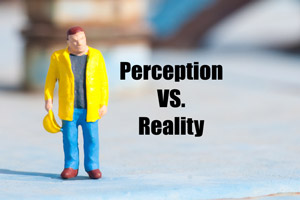Marketing Building Products: Perception Versus Reality
“Marketing is a battle of perceptions, not products,” state marketing gurus Al Ries and Jack Trout in their monumental book The 22 Immutable Laws of Marketing. Most people perceive the first product in a given industry as the superior one. Buyers may remember the second and third products that enter a given industry but the first product is always the one that comes to mind. Neil Armstrong was the first person to walk on the moon. Who was the second? If you can’t be the first in a building product category, setup a new category that you can be first in.
Building Product Benefits
Architects, specifiers, contractors, and owners can evaluate a building product along several levels. Its basic characteristics are inherent to the generic version of the product. Generic building products can be made distinct by adding value through extra features, such as quality or performance enhancements. Another level of consumer perception involves augmented properties, which may offer less tangible benefits, such as maintenance and warranty services, training, or payment options. In terms of competition with other building product manufacturers, design professionals value these added benefits when making a decision, making it important for manufacturers to understand the notion of a “total package” when marketing to their customers.
Perception Is Reality
It is difficult to change an architect’s mind. Marketing to architects and specifiers may slowly build a favorable opinion over time about your product but once a perception about a building product is in their mind, it can be tough to change. The best building product doesn’t always get specified. AIA continuing education courses can teach architects about a building product’s benefits but thats not the end of the marketing game. The world of marketing consists of illusions according to marketing gurus Ries and Trout. The perception of a building product is the reality. Everything else is illusion.
Effective marketing is manipulating consumers perceptions. If architects think your roofing product is the best in the industry, but contractors think it is the most expensive, then issues can arise from these perceptions. If a building product manufacturer’s roofing product gets pegged as a cheap, problem ridden, piece of rubbish, then it will be an uphill battle to change that perception in the industry and get that product specified.
Second-Hand Perceptions
Second-hand perceptions can have a major effect on a manufacturer’s building products. If an architect tells her friend that the curtain wall system she specified on a project failed and led to water infiltration issues, then that second-hand perception may affect future specifications at the friend’s firm. Second-hand perceptions can result in the “everybody knows” principle where architects favor or despise products based on other’s perceptions.
What if these other people’s perceptions are wrong? Does it matter? Marketing is not a battle of products, its a battle of perceptions. An effective education campaign can be a major tool in creating positive perceptions.
What is your company doing to market your building products? How do architects, specifiers, and contractors perceive your product?
For more information or to discuss the topic of this blog, please contact Brad Blank





